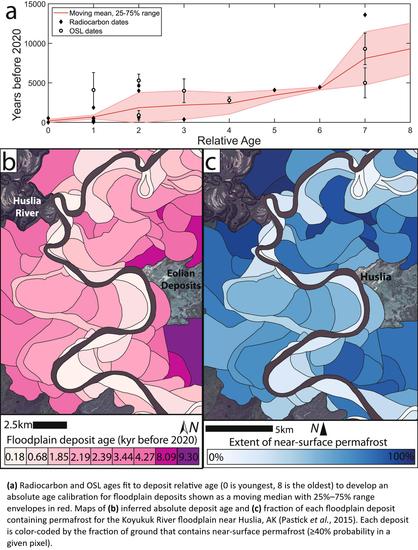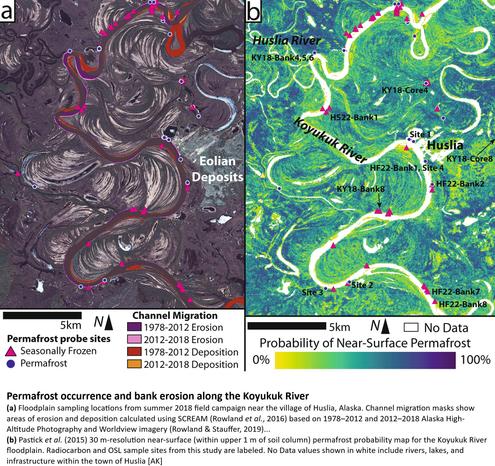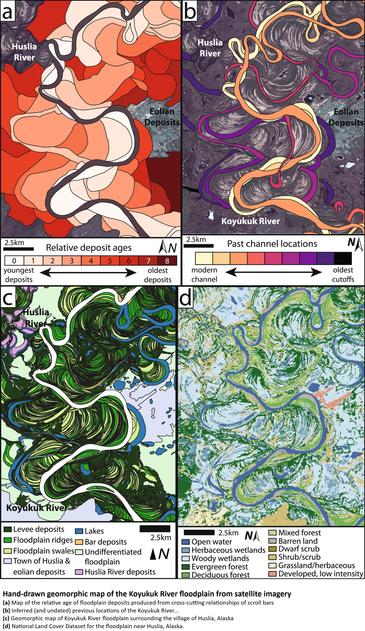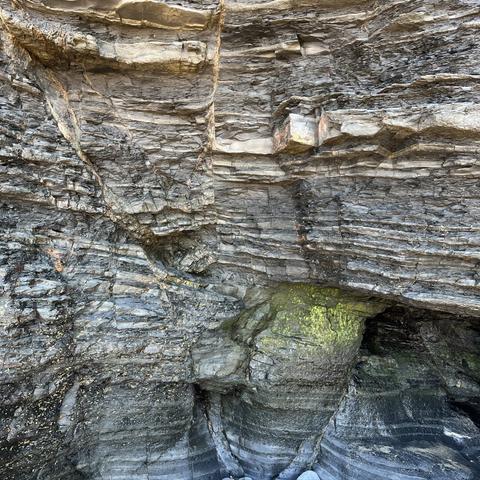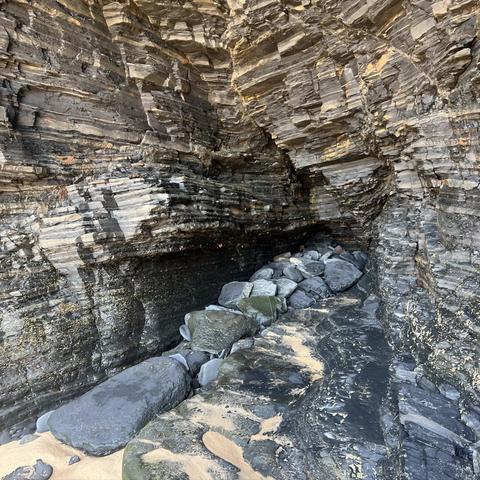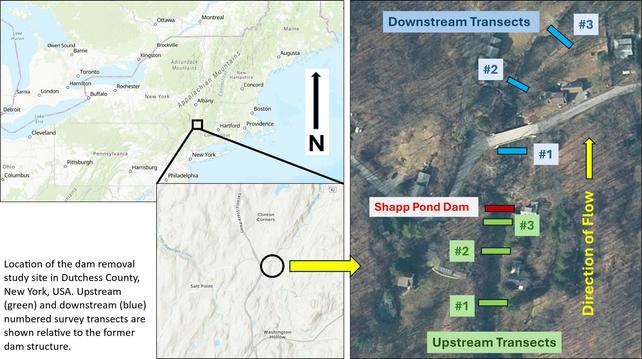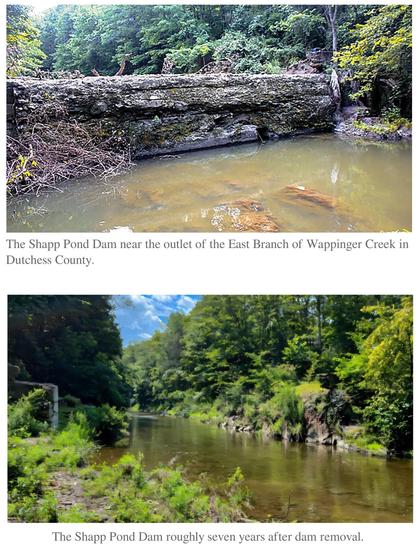--
https://doi.org/10.1029/2024AV001175 <-- shared paper
--
“... KEY POINTS:
• River meandering resets permafrost development and vegetation succession by eroding old floodplain areas and depositing new land
• On the Koyukuk River, permafrost rapidly forms in new deposits, but it takes over 4 Kyr to develop to its full areal extent of 85%
• The rate of permafrost formation is likely linked to vegetation succession on younger and overbank deposition on older floodplain areas…”
#water #hydrology #permafrost #development #research #Alaska #river #stream #watercourse #channel #meandering #vegetation #spatialanalysis #erosion #floodplain #overbank #deposition #sedimentation #KoyukukRiver #riverdynamics #climate #climatechange #Arctic #environment #landform #geomorphology #dating #spatiotemporal #model #modeling #network #GIS #spatial #mapping

